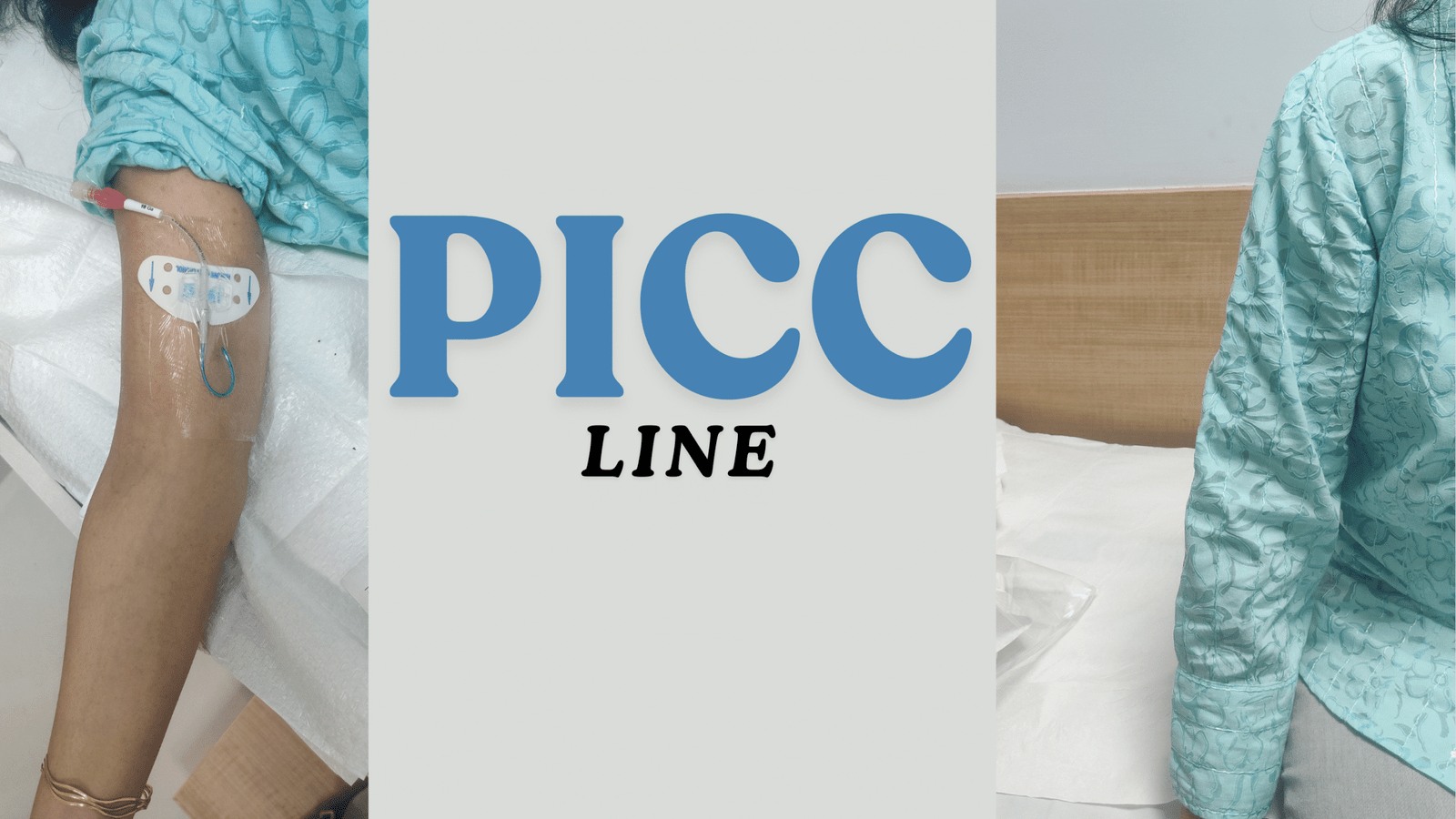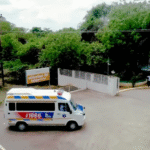A PICC line is more than just a tube—it’s a silent ally in the fight against cancer, offering comfort, strength, and a pain-free path through chemotherapy…..Dr.Saroj Pattnaik
The first time you hear the word chemotherapy, it can feel like the world stops. It’s a word heavy with emotion, fear, and uncertainty. But it’s also a word filled with hope—a fight for life, a step toward healing. While chemotherapy attacks the disease, a PICC line(Peripherally Inserted Central Catheter) becomes more than a medical device. It becomes a pathway to healing—a silent partner in your treatment journey that makes life much easier.
Let’s discuss what a PICC line is, why it’s used, why it’s so helpful, especially during chemotherapy, and how to care for it safely at home.
🩺 What Is a PICC Line?
A PICC line (Peripherally Inserted Central Catheter) is a soft, flexible tube inserted into a large vein in your upper arm and advanced toward a vein near your heart. Unlike a regular IV that needs to be replaced often, a PICC line can stay in place for weeks or months, depending on your treatment( one of our patients kept it for a year).
For many patients undergoing chemotherapy, it becomes a lifeline—a simple, nearly painless way to receive powerful medications without repeated needle sticks.
💉 Why Do Patients Need a PICC Line?
PICC lines are commonly recommended for:
- Chemotherapy
- Long-term IV antibiotics
- Total Parenteral Nutrition (TPN)
- Frequent blood sampling
- Patients with poor peripheral veins
They offer a painless and durable alternative to repeated needle pricks.
💉 Why Is a PICC Line Recommended During Chemotherapy?
Chemotherapy often involves multiple cycles of infusions, blood tests, and supportive medications. Unfortunately, repeated IV cannulations can be exhausting—not just physically, but emotionally. Veins get sore, fragile, and more complicated to access.
Imagine you’re undergoing 6 months of chemotherapy. Without a PICC line, you’d need a fresh needle every time you get chemo or a blood test. That adds up to dozens of needle pricks, bruises, and sore veins. With a PICC, you avoid all that. One small insertion, and you’re good to go for the entire treatment cycle.
That’s why a PICC line is so valuable. It allows:
- Direct delivery of chemotherapy drugs
- Frequent blood draws without repeated pricks
- Long-term use, often for the entire course of chemotherapy 6-9 months.
- Protection of smaller veins from irritation or damage
Imagine not worrying about IVs every time you walk into the hospital. For many, that sense of relief is life-changing.
🌼 A Human Touch: What Patients Say
“I used to dread hospital visits,” one patient told us. “Not because of the chemo, but because of the IV starts. My veins had nothing left to give.”
Another said: “The PICC line gave me back control. I could focus on healing instead of the fear of needles.”
These aren’t technical benefits. These are human victories.
A PICC line offers medical support and emotional relief for patients fighting brutal battles.
⚙️ How is a PICC Line Inserted?
The procedure is typically done in a sterile room, sometimes in the ICU or a procedure suite:
- The arm is cleaned and numbed with local anaesthetic.
- A vein (usually the basilic vein) is accessed using ultrasound guidance.
- The catheter is gently threaded toward the heart.
- A chest X-ray confirms the tip is in the correct position.
The process usually takes 30–60 minutes; most patients can go home shortly afterwards.
🛡️ How to Care for Your PICC Line at Home
✅ 1. Keep It Clean
Could you wash your hands thoroughly before touching the line or changing the dressing? This simple step significantly reduces the risk of infection.
💧 2. Flush the Line
After each chemotherapy session or medication, the line must be flushed with saline.
Please flush before and after each use as directed by your nurse or doctor.
🩹 3. Dressing Changes
The transparent dressing over the insertion site should be changed weekly—or sooner if it gets wet, dirty, or starts to lift.
Always use sterile technique.
🚿 4. Protect It While Showering
You can use a waterproof cover or cling film to protect the line. Avoid swimming or soaking the arm in water.
🔍 5. Check for Signs of Infection
🚨 When to Call Your Doctor
Watch for:
- Redness, swelling, or pus at the site
- A fever or chills
- Pain or discomfort in the PICC arm
- Or if the line looks like it moved or feels different
It’s your body—you know when something’s off. Speak up early.
✔️ What You Can and Can’t Do
You can still:
- Walk around, go to work, laugh, cry, sleep, and live
- Travel with precautions (carry your PICC info card!)
- Receive treatment at home with a visiting nurse.
You should avoid:
- Heavy lifting with the PICC arm
- Tugging, pulling, or bending the line
- Letting anyone untrained handle it
💬 Common Questions from Chemotherapy Patients
Q: Can I travel with a PICC line?
Yes! Many patients safely travel while on chemotherapy. Just carry your PICC information and plan for access to healthcare if needed.
Q: Does it hurt when it’s inserted?
Most patients feel only a pinch during the local anaesthesia. The actual insertion is quick and well-tolerated.
Q: Can I receive chemotherapy at home through a PICC line?
In some cases, yes. Home infusions are becoming more common, especially for stable patients. Your oncologist will advise you on what’s safe for you.
Q: Will it be visible outside when I attend any social gathering?
It will be hidden inside your shirt in the upper arm, not visible outside.
Q: How much will it cost ?
A one-time insertion before chemotherapy in a PICC line clinic will cost around Rs.25,000/—and last up to 6 to 9 months.
Q: Do I need to undergo any tests before the procedure ?
A venous Doppler of the upper arm may be required if felt by the intensivist.
🎗️ Chemotherapy Is Hard. Let’s Make It a Bit Softer
When you’re undergoing chemotherapy, your body is already dealing with so much. The fatigue, nausea, uncertainty—it all adds up. The PICC line can’t take that, but it can remove the need for daily needles. It can give your veins a break. It can help you face each session with a little less dread.
And that’s a soft place to land in a world of complex things.
🌟 Final Words: It’s More Than a Line
The PICC line is a small tool with a big heart. It quietly supports you through some of the toughest days of your life, especially during chemotherapy, when even small comforts matter.
If your doctor recommends it, don’t fear it. Learn about it. Ask questions. And trust that this little line might be one of the most helpful allies in your healing.
Are you or someone you love starting chemotherapy?
Feel free to drop your questions or stories in the comments below. Let’s walk this path together—with knowledge, care, and compassion. Healing isn’t just about medicine. It’s about feeling human again.










